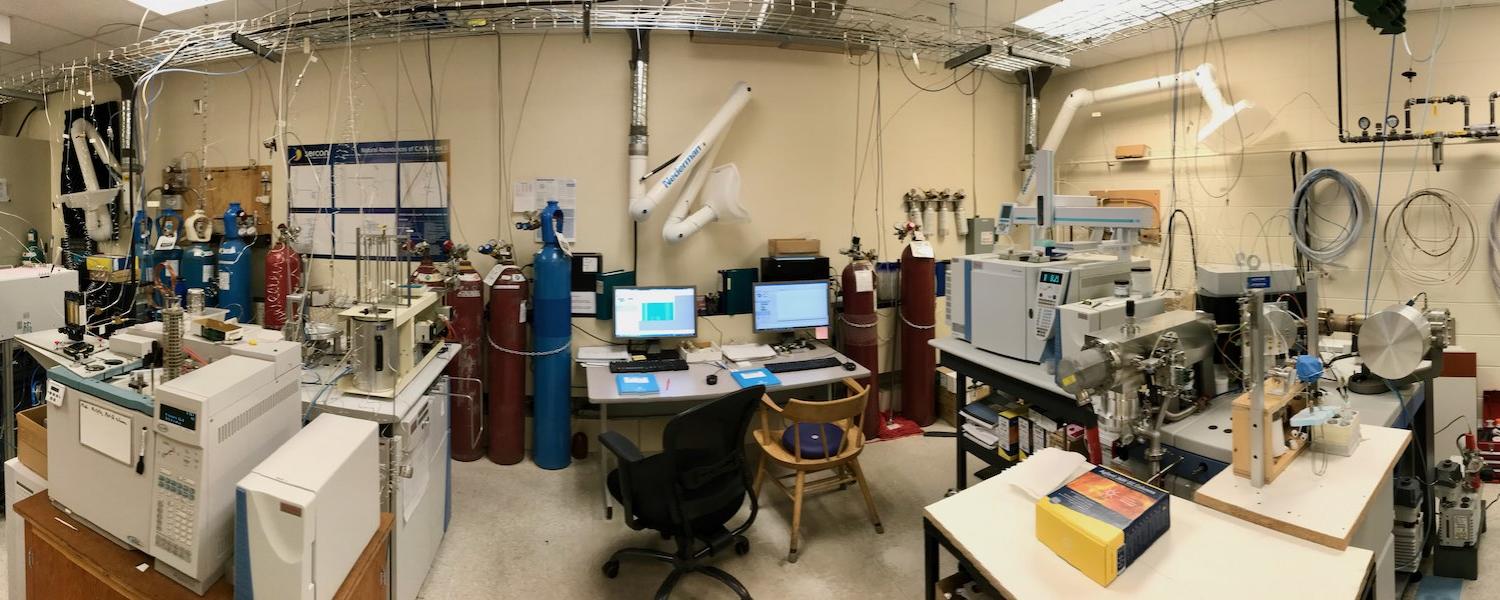
Isotope Science Lab
δ34S-H2S (gas) : Sampling Instructions
These instructions are for sampling a H2S containing gas in the field. Note: H2S is a dangerous and highly toxic gas. Sampling should only be done by persons with up-to-date “H2S Alive” training and/or under the supervision of suitably trained field staff.
- the gas stream must be slow and controlled (~1 litre/minute)
- connect the gas stream to a downtube (any small diameter, tubing that you can insert into the supplied 1 litre nalgene bottle. Typically nalgene or silicone tubing is used)
- uncap the 1 litre nalgene bottle (save the cap) which contains ~200ml of prepared cadmium acetate solution
Note: cadmium acetate solution can be prepared as described below. This mix gives enough for ~12 x 1 liter sample bottles:
- 500 ml Acetic Acid
- 62.5 g CdAc2 (CAS# 5743-04-4)
- 2 L distilled H2O
Note : cadmium acetate has a very strong “vinegar” odour. Cadmium is a toxic metal. See MSDS.
- Carefully insert the downtube into the solution so the gas stream “bubbles” gently through the CdAcetate solution. CAUTION: if the gas stream is too fast/strong you risk “blasting”/splashing the cadmium acetate solution out of the bottle (and usually all over yourself … BE CAREFUL)
- Leave bubbling until you see the Cd acetate solution start to turn yellow as CdS precipitate forms (note: CdS is bright yellow : CdAc + H2S à CdS). Allow the gas to bubble for at least a few minutes after first noticing the yellow color. This ensures enough CdS ppt is formed for subsequent isotope analysis
- If [H2S] concentration in the gas stream is very low, bubbling for several hours is an option. But, if after 2 to 3 hours no yellow precipitate is observed, it is safe to assume the gas stream is free of H2S(g)
- Shut off your gas flow, remove the downtube from the nalgene bottle
- Cap bottle tightly, put bottle into a ziplock bag, place bagged sample into a cooler (cool packs are NOT necessary).
- Finally, if you are shipping samples from outside Alberta, you must filter and convert the CdS to Ag2S. Please contact the lab for additional SOP.
Deliver to:
University of Calgary
Dept of Geoscience
Applied Isotope Geochemistry Lab (Earth Science 513)
2500 University Drive NW
Calgary, Alberta, T2N 1N4
Attn: Steve Taylor, 403-210-6003, steve.taylor@ucalgary.ca
